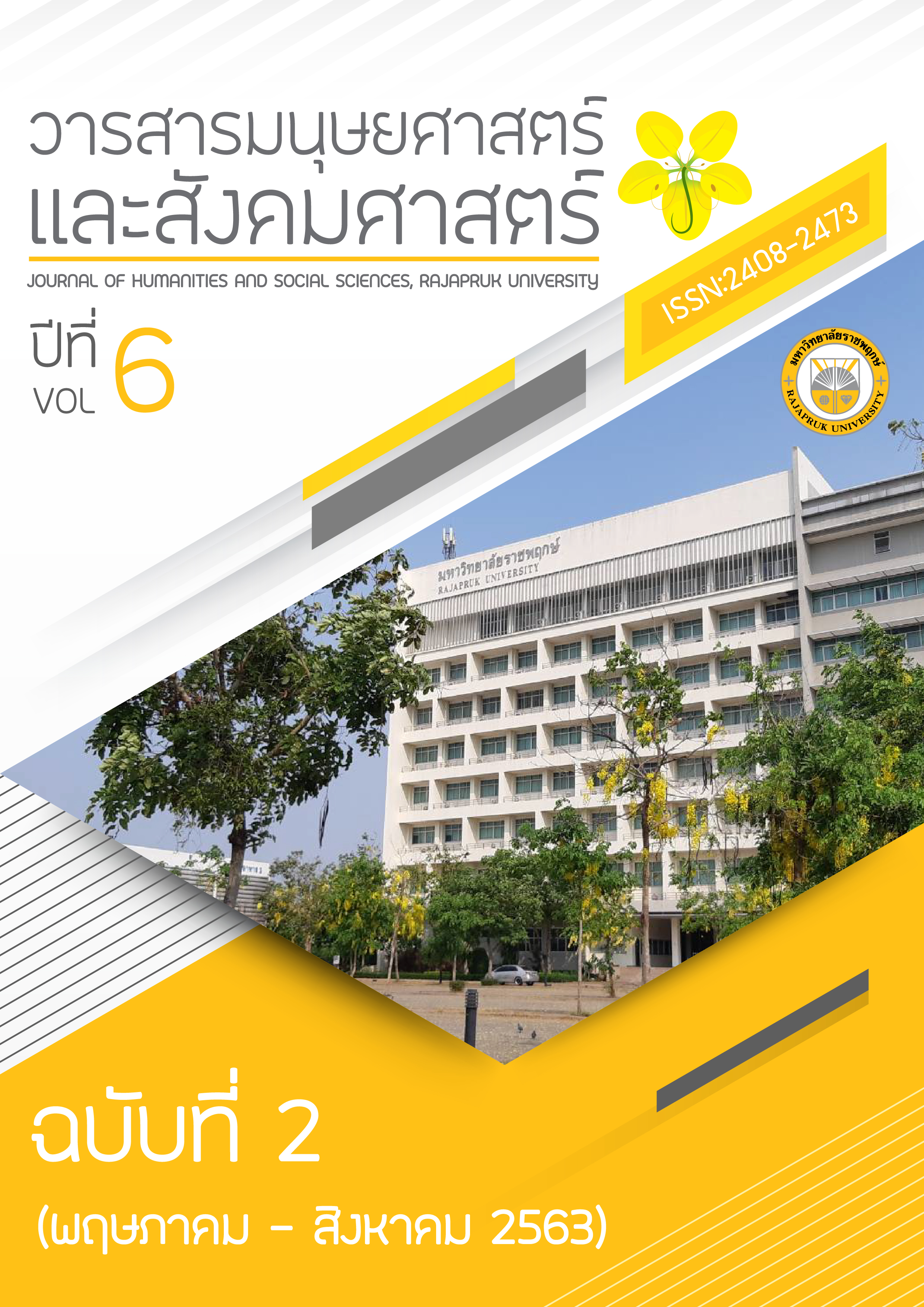Leadership Style of Executives and Employees’ Work Motivation Case Study: Private Universities among Benjamitra Network
Main Article Content
Abstract
The objectives of this research were to: 1) study the leadership style of executives in private universities based on the opinions of employees, 2) study work motivations of employees in private universities, 3) compare the leadership style of executives in private universities based on the opinions of employees classified by demographic characteristics, 4) compare work motivations of employees in private universities classified by demographic characteristics, and 5) study a relationship between leadership style and work motivations of employees in private universities. The sample was 286 employees working in private universities among Benjamitra Network. The tool of this research was questionnaires and the statistic used were means, percentages, standard deviation, t-test, One-Way ANOVA, LSD (Least Significant Difference) and Pearson’s product correlation coefficient.
The results showed that: 1) Most of employees had the opinion that their executives were team management leadership style followed by task-oriented leadership style and country club management leadership style. Most of motivation factors of employees were success at work and the maintenance factors were relations with colleagues, 2) The employees with different status, level of education, position, income per month and affiliated faculty had different opinion on the leadership style of executives in private universities of statistical significant level of .05, 3) The employees with different status and affiliated faculty had different opinion on motivation factors of employees in private universities of statistically significant level of .05, 4) The employees with different level of educations, position, duration of employment, income/month and affiliated faculty had different opinion on maintenance factors of employees in private universities of statistically significant level of .05 and 5) Most of each leadership style and work motivation of employees in private universities had a positive correlation.
Article Details
References
จันทรัศม์ ภูติอริยวัฒน์. (2560). ภาวะผู้นำการเปลี่ยนแปลงของผู้บริหารสถานศึกษากับแรงจูงใจในการทำงานของครูที่ส่งผลต่อจิตวิญญาณความเป็นครูโรงเรียนสังกัดสำนักงานเขตพื้นที่การศึกษามัธยม กรุงเทพมหานครเขต 2. วารสารวิชาการ คณะศึกษาศาสตร์ มหาวิทยาลัยศรีนครินวิโรฒ, 10(3) กันยายน-ธันวาคม 2560.
ณัดดา ทิพย์จันทา. (2562). แรงจูงใจในการปฏิบัติงานของพนักงานระดับปฏิบัติการของสายการบินไทยแอร์เอเชีย. บทความวิชาการ สังกัดภาควิชา ธุรกิจการบิน สถาบันพัฒนาบุคลากรการบิน มหาวิทยาลัยเกษมบัณฑิต.
ธัญญามาส โลจนานนท์. (2557). ภาวะผู้นำและแรงจูงใจในการทำงานที่ส่งผลต่อความคิดสร้างสรรค์ของพนักงาน กรณีศึกษา บริษัท ซิลลิค ฟาร์มา จำกัด. วิทยานิพนธ์ปริญญาบริหารธุรกิจมหาบัณฑิต มหาวิทยาลัยศิลปากร.
นาถนภา ยมจันทร์. (2560). ความคิดเห็นของครูที่มีต่อภาวะผู้นำของผู้บริหารสถานศึกษาของโรงเรียนในศูนย์คุณภาพการศึกษากลุ่มหนองบัว 01 สังกัดสำนักงานเขตพื้นที่การศึกษาประถมศึกษานครสวรรค์ เขต 3. บทความวิชาการ สาขาวิชาการบริหารการศึกษา คณะศึกษาศาสตร์ มหาวิทยาลัยรามคำแหง.
ปราณี หลำเบ็ญสะ. (2559). การหาคุณภาพของเครื่องมือวัดและประเมินผล. ค้นเมื่อวันที่ 20 ธันวาคม 2561, จาก http://edu.yru.ac.th/evaluate/attach/1465551003.
พินิจ โกธากานต์. (2559). ผู้นำและภาวะผู้นำกับความสำเร็จขององค์การ. ค้นเมื่อวันที่ 20 ธันวาคม 2561, จาก http://phinit0112.blogspot.com/.
ศิริกัลยา สามไชย. (2559). แรงจูงใจในการทำงาน ภาวะผู้นำการเปลี่ยนแปลง และพฤติกรรมการเป็นสมาชิกที่ดีขององค์การ: กรณีศึกษาพนักงานบริษัทผลิตเครื่องมือแพทย์แห่งหนึ่ง. วิทยานิพนธ์ปริญญาศิลปศาสตรมหาบัณฑิต สาขาจิตวิทยาอุตสาหกรรมและองค์การ มหาวิทยาลัยธรรมศาสตร์.
ศิลาพร จำปารัตน์ และ ชยุต วิจิตรสุนทร. (2558). แนวทางการพัฒนาแรงจูงใจในการปฏิบัติงานของครูผู้สอนระดับปฐมวัยในโรงเรียน สังกัดสำนักงานเจตพื้นที่การศึกษากำแพงเพชร เขต 1. รายงานการสืบเนื่องการประชุมวิชาการ (Proceeding) เครือข่ายบัณฑิตศึกษา ครั้งที่ 15 มหาวิทยาลัยราชภัฏกำแพงเพชร.
สำนักงานคณะกรรมการอุดมศึกษา. (2560). ข้อมูลสถิติทางการศึกษา รายงานจำนวนบุคลากร. ค้นเมื่อวันที่ 13 มกราคม 2562, จาก http://www.info.mua.go.th/info/.
อริญชญา วงศ์ใหญ่. (2558). แรงจูงใจในการปฏิบัติงานของครูและบุคลากรทางการศึกษาในวิทยาลัยเทคโนโลยีพายัพและบริหารธุรกิจ จังหวัดเชียงใหม่. งานวิจัย วิทยาลัยเทคโนโลยีและบริหารธุรกิจ.
Filho, A, Pimenta, C, & Borges, K. (2015). Study of the Leadership Styles considering Gender Differences. Journal of Management and Business Research, 15(2).
Ozsoy, E. (2019). An Empirical Test of Herzberg’s Two-Factors Motivation Theory. Marketing and Management of Innovations, 2(1).
Thompson, S.K. (1992). Sampling. New York: John Wiley and Sons.


